The Department of Medicine has a rich history of leading collaborative and interdisciplinary scientific breakthroughs and medical advancements. Since the 1800s, the pioneer members of the Department of Medicine at Mount Sinai, Mount Sinai Beth Israel, Mount Sinai Morningside and Mount Sinai West have been saving lives and changing the path of medicine for generations to come.
Scientific Highlights
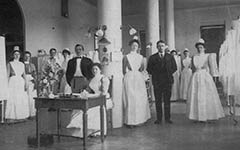
1859
A policy of accepting tuberculosis patients at St. Luke’s is established.
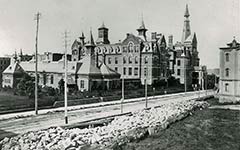
1863
James Henry Roosevelt died November 30, leaving a large portion of his estate for the founding of a hospital and for its permanent endowment.

1877
St. Luke’s joined three other NYC hospitals to begin the first ambulance service.
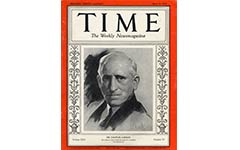
1897
Mount Sinai’s Libman published work describing streptococcus enteritis in infants and he ultimately helped to establish what William Welch called “The Mount Sinai School of Cardiologists.”
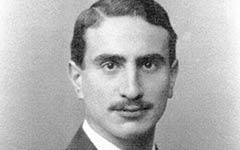
1908
Mount Sinai’s Reuben Ottenberg first published mention of using blood test for compatibility before human blood transfusion. He is the first to note that human blood groups are inherited, according to Mendel’s Law. He also showed that Group O blood could be given to Group A and B patients, establishing the concept of the ‘Universal Donor.’
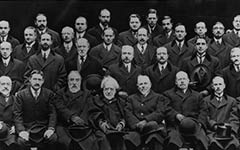
1908
Mount Sinai’s Leo Buerger published the first comprehensive report of clinical and pathological aspects of thrombo-angiitis obliterans (Buerger's Disease), a disease of the blood vessel walls that usually resulted in gangrene. Buerger's description initiated work that eventually made amputation unnecessary in many cases.
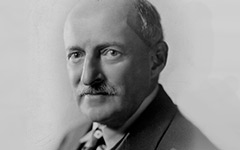
1910
Mount Sinai’s Nathan E. Brill published a description of what Brill thought was the endemic form of typhus, later known as Brill’s Disease. It then became Brill-Zinsser Disease, as Zinsser showed it was not endemic, but a mild recrudescent form of epidemic typhus.
1910
St. Luke’s Hospital, Hans Zinsser, MD, co-authored a textbook of bacteriology.

1912
Mount’s Sinai’s George Baehr is the first to call attention to the renal lesions in subacute bacterial endocarditis.
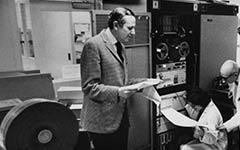
1915
Mount Sinai established one of the first electrocardiography departments in the county.
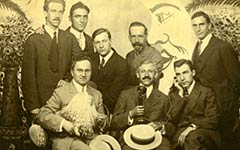
1917
Mount Sinai’s Albert A. Epstein described idiopathic nephritic syndrome (Epstein’s syndrome) – the cause of swelling in Bright’s disease.
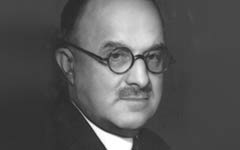
1925
Mount Sinai’s Eli Moschcowitz described hemolytic thrombocytopenic purpura, also known as Moschcowitz Disease.
1926
Mount Sinai physicians described pulmonary hypertension as a separate clinical entity.
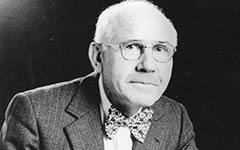
1929
Mount Sinai’s Arthur M. Master developed the first successful cardiac stress test, the Master Two-Step.
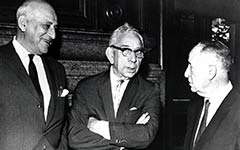
1932
Mount Sinai’s Ginzburg, Oppenheimer and Crohn published first description of regional enteritis – an inflammatory disease of the intestine (Crohn’s disease)
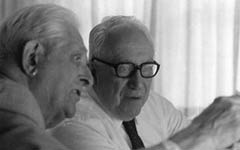
1932
Mount Sinai’s Wessler and Rabin established bronchial adenoma as a clinical and anatomic entity.
1932
Mount Sinai’s Ameil Glass described and gave name to bronchopulmonary segments, a hitherto unnoticed feature of the pulmonary lobe.
1932
New York Hospital’s Allergy Clinic, founded in 1918 by Robert A. Cooke, moved to Roosevelt Hospital. It later becomes Roosevelt Hospital’s Institute of Allergy.
1933
Mount Sinai’s Winkelstein described a new treatment for stomach ulcers, the continuous alkalinized milk drip.
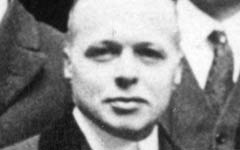
1933
Mount Sinai’s Richard Lewisohn and Nathan Rosenthal published work showing foreign proteins in intravenous therapy caused post-transfusion chills and outlined technique for better handling of IV equipment. To study this, Mount Sinai had established the first Intravenous Therapy Department in the country in 1931.
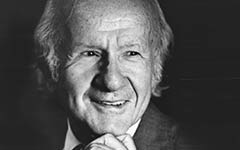
1934
Mount Sinai’s William Hitzig described the first clinically applicable method for measuring the circulation time to the right heart, used to evaluate heart failure for many years.
1934
Arthur J. Antenucci, MD, joined the medical staff. He serves as Chief of Medicine at Roosevelt Hospital from 1957 until 1970 and as Editor-in-Chief, The American Journal of Medicine, 1971 through mid-1986.
1935
Mount Sinai’s Winkelstein first described peptic esophagitis.

1935
Mount Sinai’s Baehr, Klemperer and Schifrin published the first description of the vascular lesions in lupus.
1939
Beth Israel organized the National Salmonella Center.
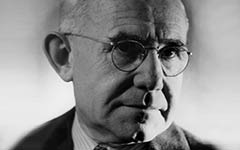
1941
Mount Sinai’s Joseph Harkavy described a variant of Kussmaul-Maier syndrome related to asthma.
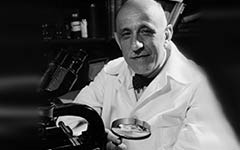
1942
Mount Sinai’s Paul Klemperer, Abou Pollack and George Baehr published the first description of what they termed collagen disease as a unifying category for several disorders.
1945
Roosevelt Hospital physician Thomas T. Mackie co-authored of A Manual of Tropical Medicine. The sixth edition is published nearly 30 years after his death as the classic Hunter’s Tropical Medicine.

1946
Arthur Fishberg, Chief of the Dept. of Medicine at BI and on Mount Sinai’s staff as well, created the Fishberg renal concentration test - a test of renal water concentration.
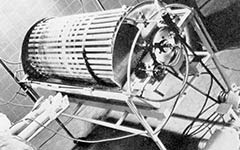
1947
Mount Sinai performed first kidney dialysis in the U.S., using a Kolff artificial kidney.
1949
Poliomyelitis service inaugurated at St. Luke’s Hospital.

1950
Mount Sinai developed a portable kidney dialysis machine.
1951
Beth Israel doctors developed a treatment for frostbite using Heparin tablets, lessening the morbidity and mortality among U.S. Troops in Korea.

1952
Mount Sinai’s Janowitz, Colcher, and Hollander discovered evidence that an enzyme could inhibit acid secretion.

1952
Mount Sinai’s Osserman and Kaplan introduced the ‘Tensilon’ test for myasthenia gravis.
1952
Mount Sinai opened the first pre-natal diabetes clinic in NYC.
1953
A.L. Loomis Bell, Jr., MD, became director of the cardiopulmonary laboratory at St. Luke’s Hospital.

1954
Mount Sinai’s Louis Siltzbach established definitively the specific diagnostic role of the Kveim test, later known as the Siltzbach-Test.
1954
Beth Israel opened one of the first geriatrics clinics in the U.S.
1955
J. Maxwell Chamberlain, MD, Chief of Thoracic Surgery at Roosevelt Hospital, developed and reported on a technique of segmental pulmonary resection for the treatment of tuberculosis. The procedure is universally adopted and represented a major step in the development of the specialty of thoracic surgery.
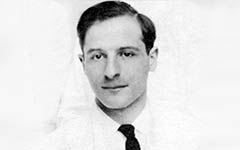
1956
Mount Sinai’s Plotz and Singer developed and standardized the latex fixation test for the diagnosis of rheumatoid arthritis.
1956
Hugh Fitzpatrick, MD, performed the first open heart repair of a septal defect in New York City at St. Luke’s Hospital.
1957
A cardio-pulmonary laboratory under the direction of Charles A. Betrand, MD, is established to diagnose and evaluate disorders of the heart, circulatory system and lungs at Roosevelt Hospital.
1957
Theodoure VanItallie, MD, returned to St. Luke’s Hospital to chair the Department of Medicine and advance St. Luke’s basic and clinical research.
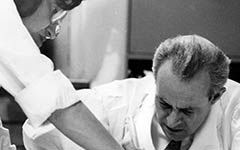
1959
Solomon Berson and Rosalyn Yalow published a definitive paper on the quantitation of the reaction between antigen and antibody in which they noted the conditions necessary for the performance of immunoassay. This allowed scientists to determine the amount of insulin and all other peptide hormones in the blood or other body fluids and tissues. Berson was later named Chair of Mount Sinai’s Department of Medicine.
1960
St. Luke’s Drs. Theodore VanItallie and Sami Hashim published work on the use of cholestyramine in the treatment of hypercholesterolemia and primary biliary cirrhosis.
1960
The ICU opened at Mount Sinai Roosevelt Hospital, one of the first established in New York City.

1964
Mount Sinai’s Irving Selikoff, Jacob Churg, and E. Cuyler Hammond published a paper showing “a link” between asbestos exposure and the formation of neoplasms, especially in the lungs.

1965
Beth Israel began clinical trials to prove efficacy of methadone treatment. Drs. Hans Popper and Fenton Schaffner are considered the founding fathers of hepatology. Popper became the Mount Sinai School of Medicine’s first dean of Academic Affairs.
1966
Mount Sinai’s Davison, Spiera and Plotz published the first description of polymyalgia rheumatic in the U.S. and helped define it as an entity.
1968
St. Luke’s John Bertles, Div. of Hematology, and another investigator are first to describe red cells from individuals with sickle cell disease that remain sickled even when oxygen levels are restored; called “irreversibly sickled cells.”
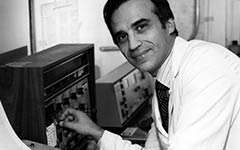
1968
Mount Sinai’s Rubin and Lieber overturned the theory that alcoholic cirrhosis was nutritional and demonstrated that it represented the toxic effect of alcohol.
1970
Richard McCray, MD, performed what is thought to be the first endoscopic gastric biopsy in the United States at St. Luke’s Hospital.
1973
The Arthur J. Antenucci Medical Research Building is dedicated at Roosevelt Hospital.
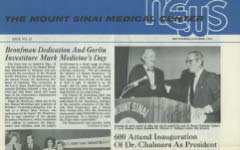
1974
Dedication of the Samuel Bronfman Department of Medicine. Mount Sinai’s Rubin and Lieber showed that alcohol was toxic to the liver in baboons.
1975
St. Luke’s has the first NIH-funded obesity research center in the U.S., created by Theodore VanItallie.
1975
St. Luke’s Hospital established the first hospital-based hospice program in the US under the direction of Chaplain Carlton Sweetser and Samuel Klagsbrun, MD.

1977
Mount Sinai’s Rosalyn Yalow, PhD won the Nobel Prize for the development of radioimmunoassay (RIA).
1981
Beth Israel doctors are among the first to recognize that AIDS is a new disease and is an early leader in the care of this patient population.
1982
St. Luke’s Michael Grieco and Michael Lange published the first recognition of an unexplained immunological deficit in homosexual men, later discovered to be HIV.
1985
Mount Sinai’s Ambrose and colleagues described the relationship between complex angiographic coronary lesion morphology and acute coronary events.
1985
Robert B. Case, MD, published a landmark study on Type A behavior vis-à-vis survival after acute myocardial infarction at St Luke’s Hospital.
1985
Airlie Cameron, MD, presented the first documentation of improved survival with the internal thoracic artery as compared with the saphenous vein bypass in a long-term follow-up study following coronary artery bypass surgery at St. Luke’s Hospital.
1986
The Arthur J. Antenucci Institute of Medical Research is established at Roosevelt Hospital.
1987
Mount Sinai’s Lina and Juan Jose Badimon developed a perfusion chamber to perform controlled evaluations of blood flow, platelet deposition and thrombus formation in various conditions. These became fundamental tools for future work on coronary artery thrombosis.
1987
Mount Sinai’s Gomes and others developed a non-invasive index of the risk of sudden death among heart attack survivors.
1988
Mount Sinai’s Meyers, Janowitz and Gumaste first demonstrated the use of colchicine to treat ulcerative colitis.
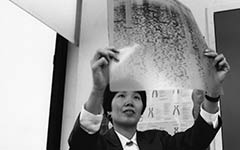
1992
Mount Sinai’s Eng discovered a new compound that kept the body’s blood sugar at a steady, normal level helping diabetic patients prevent conditions such as blindness, kidney failure and nerve damage.
1998
The James P. Mara Center for Lung Diseases opened at Roosevelt Hospital. Michael Lesch, MD, became Chair of the Department of Internal Medicine at St. Luke’s and Roosevelt and oversaw the training of more than 200 residents and fellows. As a medical student at Johns Hopkins in the 1960s, Dr. Lesch and Dr. William Nyhan identified a rare genetic disorder, characterized by compulsive self-harm, and became known as the Lesch-Nyhan Syndrome, which affects the brain and leads to excessive production of uric acid.
2000
Mount Sinai, along with Case Western Reserve University School of Medicine, determined that HIV-associated nephropathy was caused by HIV-1 infection of kidney epithelial cells. This established that the best treatment for HIV+ patients in renal failure is antiretroviral treatment.
2000
The Morningside Clinic, the new home for HIV outpatient services at St. Luke’s Hospital opened.

2001
Mount Sinai’s Goutham Narla, working in the lab of Scott Friedman, identified the gene that is defective in most cases of prostate cancer.
2005
Mount Sinai’s Change, Vargas, DelPortillo and Klotman reported alpha-defensin-1, a protein found in cells, may be the key to controlling HIV infection.
2007
Mount Sinai’s Fayad, Hyafil, Cornily, Gordon, Vucic, Amirbekian and Fuster developed a synthetic molecule that delivers an imaging enhancer to cholesterol-filled cells embedded in the arterial walls, allowing physicians to diagnose unstable plaques before they rupture.

2011
Mount Sinai’s Roger Hajjar found a new drug target for the treatment and prevention of heart failure.
2011
Mount Sinai’s Poplawski, Mastaitis, Isoda, Grosjean, Zheng and Mobbs demonstrated that diabetic nephropathy can be reversed by a relatively simple dietary intervention of adopting a ketogenic diet.
2011
Mount Sinai’s Baliram, Latif, Berkowitz, Frid, Colaianni, Sun, Zaidi and Davies found that thyroid-stimulating hormone can promote bone growth independent of its usual thyroid functions.

2012
Mount Sinai’s Inga Peter and international colleagues discovered five new genetic mutations associated with Crohn’s disease in Jews of Eastern European descent and discovered unique risk factors of Crohn’s disease in Ashkenazi Jewish population.

2012
Mount Sinai’s Avi Ma’ayan and John Cijiang He identified a protein kinase that plays a significant role in kidney fibrosis, a condition that results in kidney failure.
2012
Mount Sinai’s Caga, Das and UC collaborators developed a cancer model built in the fruit fly Drosophila, which was then used to create a whole new approach to the discovery of cancer treatments that precisely target multiple cancer genes.

2012
Mount Sinai’s Oh and Galsky and collaborators from the Dana-Farber Cancer Institute and Memorial Sloan-Kettering Cancer Center identified a six-gene signature that can be used in a blood test to predict length of survival in men with aggressive prostate cancer. This was the first study to demonstrate how prognostic markers can be useful in a clinical setting. Mount Sinai’s Fuster and Farkouh, from the U. of Toronto, led the FREEDOM trial, which is an international, clinical research trial that has shown that patients with diabetes whose multi-vessel coronary artery disease is treated with coronary artery bypass grafts surgery live longer and are less likely to suffer severe complications like heart attacks than those who undergo angioplasty.

2012
Barbara Murphy, MD, was appointed chair of the Samuel Bronfman Department of Medicine, one of only three women to be appointed Chair of Medicine at a highly ranked medical school and the first female chair in New York City.
2013
Mount Sinai’s Mascarenhas, Lu, Li, Petersen, Najfeld, Hofman and other colleagues identified the first drug that appears to stop the progression of myelofibrosis, a blood cancer.
2013
Mount Sinai’s Bonito and Alexandropoulos led an animal study that uncovered a mechanism responsible for the development of autoimmune hepatitis.
2013
Mount Sinai’s Evans, Sourisseau, Goldman, He and Gouon-Evans showed for the first time that hepatitis C virus can replicate in monkeys, which could result in a new animal model.
2013
Mount Sinai’s tenOever, Garcia-Sastre, Langlois, Albrecht, Shapiro, Chua and other colleagues discovered a way to keep highly infectious diseases from infecting researchers by using a molecular bio-containment method that causes lung cells to attack flu, or other RNA, viruses.
2013
An international collaboration of scientists with Mount Sinai showed for the first time direct evidence of cellular movement between the lung and GI tract. The discovery may have a potential impact on the design of new vaccines against infections such as HIV and E. Coli.
2013
Mount Sinai’s Llovet and Hoshida developed the first-ever gene test that could be used to identify patients with cirrhosis who are at the highest risk of developing the most common type of liver cancer HCC.
2013
Mount Sinai’s Cerutti, Shan, and Cols and other international and U.S. colleagues have found that intestinal mucus acts not just as physical barrier against commensal bacteria and dietary antigens, but also prevents the onset of inflammatory reactions against these agents. This discovery could potentially improve the lives of people suffering from IBD.
2013
The Continuum Health System and Mount Sinai Medical Center merged in 2013 to create the Mount Sinai Health System. The Department of Medicine now stretches across seven campuses in three boroughs and has affiliations throughout New York City and the tri-state area.
2014
Mount Sinai’s research team led by Duivenvoorden, Tang, and Mulder, along with international colleagues, designed and tested a high-density lipoprotein nanoparticle loaded with a statin drug. This nanotherapy showed capable of directly targeting and lowering dangerous inflammation in blood vessels.
2013
Mount Sinai’s Aguirre-Ghiso and colleagues identify mechanisms and potential biomarkers of tumor cell dormancy and identify specific characteristics found in cancer cells as well as in the microenvironment to determine whether they will metastasize rapidly or will remain dormant.
2013
Mary Ann McLaughlin and colleagues from the WTC-CHEST Program, a subset of the World Trade Center Health Program Clinical Center for Excellence at Icahn School, have linked high levels of inhaled particulate matter by first responders at Ground Zero to kidney damage.
2013
MS researchers found that a drug-resistant strain of the H7N9 virus retained its ability to replicate in human respiratory cells and was still able to produce severe disease in animal models; study suggests that flu viruses can develop drug-resistant mutations without suffering a penalty in terms of their own fitness.
2014
Mount Sinai’s Costa and other researchers generated engineered cardiac tissue from human embryonic stem cells with the resulting muscle having remarkable similarities to native heart muscle.
2014
Mount Sinai’s Reddy implanted the US’ first miniature-sized, leadless cardiac pacemaker directly inside a patient’s heart without surgery. The device, resembling a small, metal silver tube, is only a few centimeters in length, making it less than ten percent the size of a traditional pacemaker.
2014
Mount Sinai’s Llovet and researchers from Harvard have discovered a link between the presence of two mutant proteins, IDH1 and IDH2 that may drive tumor formation in intrahepatic cholangiocarcinoma (iCCA), the second most common form of liver cancer.
2014
Mount Sinai’s Buettner and colleagues demonstrate for the first time that insulin signaling in the mammalian brain regulates BCAA levels by increasing BCAA breakdown in the liver. This suggests a key mechanism behind diabetes may start in the brain, with early signs of the disease detectable through rising levels of molecules not previously linked to insulin signaling.
2014
The Mount Sinai Hospital is first in the U.S to use the first and only FDA-approved, drug-coated balloon catheter to open blocked arteries in the leg, the Lutonix® 035 Drug Coated Balloon (DCB) Catheter.
2014
Mount Sinai’s Davies and colleagues announce that by overexpressing two transcription factors -- PAX8 and NKX2-1 they were able to induce stem cells into thyroid cells.
2014
Mount Sinai’s Narula and researchers show that abnormalities in the structure and function of the brain can appear in people before the other consequences of vascular risk factors appear, such as heart attack or stroke
2014
Mount Sinai’s Fish and colleagues show that delivering stem cells directly into damaged heart muscle after a heart attack may help repair and regenerate injured tissue, according to a study.
2014
Mount Sinai’s Zaidi and team show that the most commonly used medications for osteoporosis worldwide, bisphosphonates, may also prevent certain kinds of lung, breast and colon cancers, according to two studies.
2015
The Tisch Cancer Institute at the Icahn School of Medicine at Mount Sinai earns National Cancer Institute Designation
2015
Mount Sinai’s Aguirre-Ghiso and others discovered that the gene NR2F1, when switched on, programs tumor cells to stay dormant. When the gene is switched off, tumor cells divide and multiply as part of abnormal growth, potentially allowing dormant cells to grow into tumors throughout the body (metastasis). Combining the anticancer drugs azacytidine and retinoic acid significantly increased the amount of active NR2F1 in tumor cells.
2015
Mount Sinai’s Stewart and colleagues identify harmine drug class as possible treatment in diabetes.
2015
Mount Sinai’s Reddy and team performed the first implant in the Eastern United States of the newly FDA-approved WATCHMAN device on March 23, 2015.
2015
Mount Sinai’s Fuster and colleagues describe a newly designed score reporting a combination of the 5 main variables under study: BP, exercise, weight, alimentation, and tobacco (i.e., the Fuster-BEWAT Score [FBS]). For each variable, a numeric grading system (0, 1, 2, or 3) has been adopted in relation to the international guidelines for cardiovascular risks and habits; the optimal value is 3. The score reports on both healthy habits and biological parameters.
2015
Mount Sinai’s Hajjar and colleagues show that gene therapy can clip out genetic material linked to heart failure and replace it with the normal gene in human cardiac cells.
2015
Mount Sinai’s Hajjar and colleagues in Cardiology and the Experimental Therapeutics Inst. find a first-in-class small molecule drug candidate, N106, which was able to improve the pumping ability of heart muscle cells.
2015
Mount Sinai’s Cijiang He and colleagues publish study that suggests that variations in the gene RTN1 leads to greater production of the related RNT1 protein, which causes kidney cells to self-destruct.
2015
Mount Sinai’s Zaidi and colleagues in Italy publish a study that suggests irisin, a recently discovered protein, is fundamental to muscle-bone communication, and likely translates the well-known skeletal anabolic action of exercise by directly stimulating new bone synthesis by osteoblasts, hence growing new bone.
2016
Mount Sinai’s Colombel and colleagues from Naval Medical Ctr, Mayo Clinic and others discover that biomarkers in the blood can help identify patients who are at risk for inflammatory bowel disease.
2016
Mount Sinai’s Perumal and Parekh, MD and others show that targeting both CDK4 and ARK5, proteins responsible for maintaining energy balance within the cell, is extremely effective in causing cell death in myeloma. Their research identifies new targets for myeloma drug development.
2016
Mount Sinai’s Hajjar and international colleagues say they have identified a key protein (CCN5) that has the potential to reverse established cardiac fibrosis; the research is the first to demonstrate the ability to reverse cardiac fibrosis in heart failure models by targeting a specific gene.
2016
Mount Sinai’s Buettner and others publish “first study to suggest that Alzheimer’s disease pathology increases susceptibility to diabetes due to impaired insulin signaling in the hypothalamus”.
2016
Mount Sinai’s Hajjar and colleagues from Brigham & Women's Hospital in Boston, and Centro Nacional de Investigaciones Cardiovasculares Carlos III in Madrid, have used a novel gene therapy - aerosol inhalation technique used to deliver the SERCA2a gene - to halt the progression of pulmonary hypertension.
2016
Mount Sinai’s Law, a graduate fellow in Dr. Benjamin Chen’s laboratory, and colleagues studied HIV-infected immune cells in mice and found how they can latch onto an uninfected sister cell to directly transmit newly minted viral particles. This challenges the prevailing wisdom that the primary route of HIV infection of immune cells is from free-floating viral particles that move within tissue and blood fluids.
2016
Mount Sinai’s Chair of the Department of Medicine, Dr. Barbara Murphy and international colleagues in a Genomics of Chronic Allograft Rejection (GoCAR) study identified a panel of genes which can help predict whether a transplanted kidney will later develop fibrosis, an injury which can cause the organ to fail.
2016
Mount Sinai’s Mobbs finds that reversing impaired kidney function in diabetics may be possible with the ketogenic diet; “Our study is the first to show that a dietary intervention alone is enough to reverse this serious complication of diabetes.”
2016
Mount Sinai’s Aguirre-Ghiso and others show that even before tumors develop, breast cancer cells with a few defined molecular alterations can spread to organs, remain quiet for long periods of time, and then awaken to form aggressive, deadly breast cancer metastasis.
2017
Mount Sinai’s Aguirre-Ghiso and colleagues have discovered the conditions by which specific signals in primary tumors of head and neck and breast cancers, pre-program cancer cells to become dormant and evade chemotherapy after spreading. Findings could lead to new drug development, treatment options and transform the way doctors care for cancer patients to treat metastatic disease.
2017
Scientists at the Mount Sinai Acute GVHD International Consortium (MAGIC) led by Sinai’s Ferrara and John Levine created an algorithm, dubbed the "MAGIC algorithm," that determines a patient's risk of developing graft-versus-host disease by measuring concentrations of these proteins, ST2 and REG3a, allowing for early intervention, which would save lives.
2017
Mounts Sinai’s Buettner and colleagues find that the sympathetic nervous system, not white blood cells, is critically important in the regulation of energy expenditure and thermogenesis, researchers reveal in a new report.
2017
Mount Sinai’s Hajjar and colleagues have performed the first study using a novel vector for gene therapy to improve heart function in non-ischemic heart failure; heart function improved 25%; this study shows that gene therapy is now a viable option for treating congestive heart failure.
2017
Benjamin Greenbaum, PhD and colleagues from Memorial Sloan Kettering have created the first mathematical model that can predict how a cancer patient will benefit from certain immunotherapies. This novel model also has the potential to help find new therapeutic targets within the immune system and to help design vaccines for patients who do not typically respond to immunotherapy.
2017
Mount Sinai’s Irie identified a protein, tyrosine kinase 6 (PTK6), that can be targeted to suppress growth of a common type of breast cancer known as "estrogen receptor positive" (ER+), including ER+ cancers that are resistant to standard treatments; could lead to a new way to treat these drug resistant metastases of ER+ breast cancers and/or prevent their metastases in the first place.